Thomas Hirschhorn’s sprawling monument to his Swiss hero
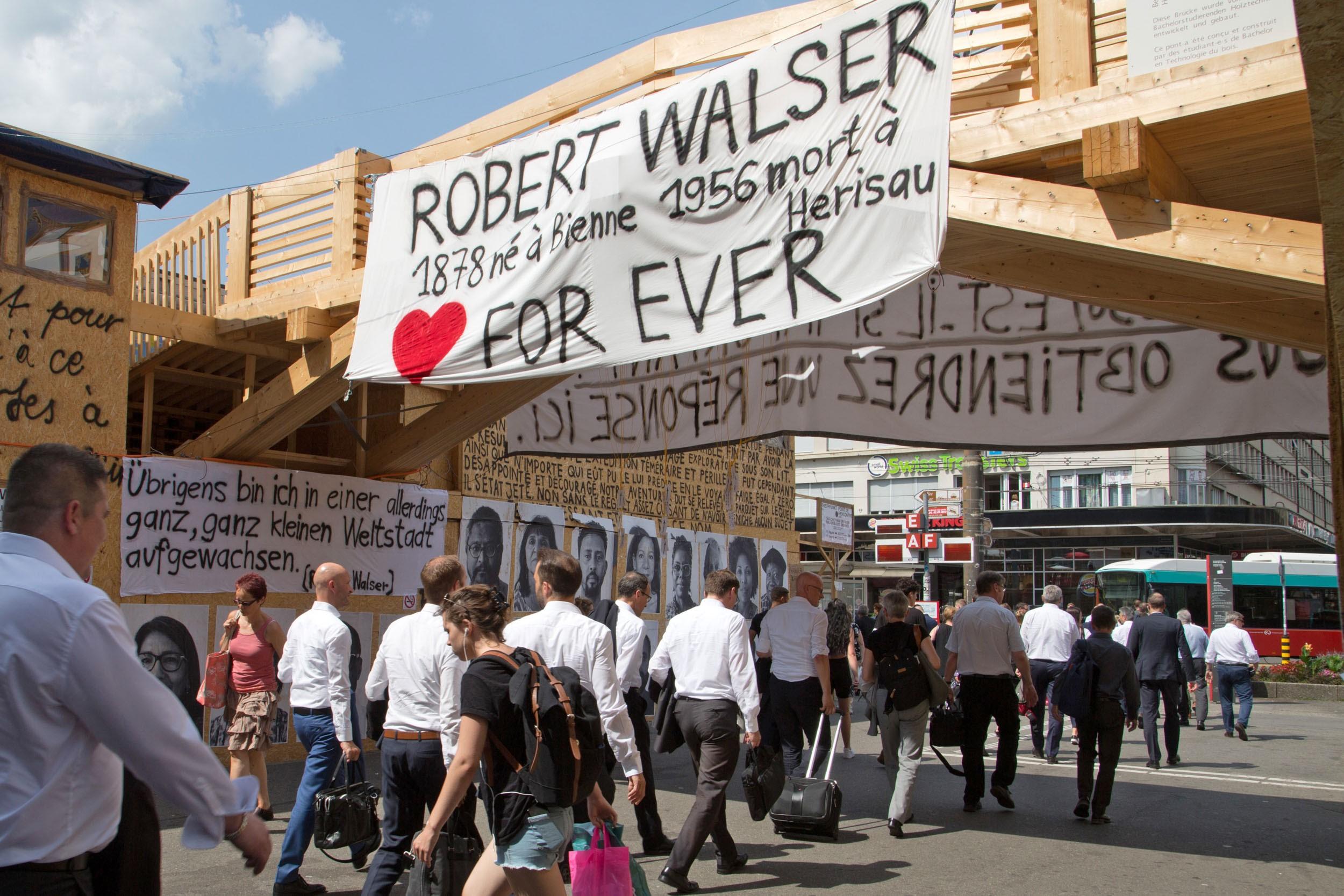
Who was Biel writer Robert Walser and why has renowned Swiss artist Thomas Hirschhorn built a sprawling wooden art installation in his honour outside a local train station?
“Are you staying for the whole day?” In a white shirt with the sleeves rolled up, his nose sunburned, Swiss artist Thomas HirschhornExternal link is writing the daily programme for his “Robert Walser SculptureExternal link” in front of Biel railway station in northwestern Switzerland. It is 10am on a Friday in early July. His temporary monument, made of planks of wood, chipboard, sticky tape and banners, is receiving its first visitors.
The Robert Walser Sculpture
Thomas Hirschhorn’s art installation dedicated to local writer Robert Walser is located in front of Biel railway station and is open to the public every day from 10am to 10pm until September 8, with no admission charge. The sculpture occupies an area of 1,300 square metres and is an impressive wooden construction, primarily composed of pallets. The aim is to invite the local population to come and exchange views about the work and life of Robert Walser, who was born in Biel in 1878.
“I’ll be here until 10pm in any case, like every day,” Hirschhorn says. From June 15 to September 8, he is devoting 86 days in memory of the Biel author Robert Walser (1878-1956), who he describes as “one of the most inspired and inspiring Swiss writers”.
The artist says he wanted to set up a “difficult, complicated and complex project” with residents to get them to reflect on the local writer who he considers a hero.
“I love his work which is the work of existential perdition and existential uncertainty. Robert Walser himself lost his way between rebellion and gaiety,” he explains.
A library, a kindergarten, a television studio, a writer’s residence and a canteen – Hirschhorn’s gigantic structure has several self-contained elements. It also provides various services, including Arabic and Esperanto courses, city tours, a theatre play, conferences, and a daily presentation of the sculpture. These are offered daily at no cost to participants.
Simple and extraordinary
“The atmosphere here is like Walser’s writing,” says Julien, who is responsible for the production of a Robert Walser Journal distributed on site. Walser’s novels and short stories, written between Berlin, Bern and Biel – The Tanners (1907), The Assistant (1925), The Walk (1917), Seeland (1920) – present detailed, precise descriptions of everyday life. Although Walser was greatly admired by writers such as Hermann Hesse, Kurt Tucholsky, Robert Musil, Franz Kafka and Walter Benjamin, he was less known to the general public.
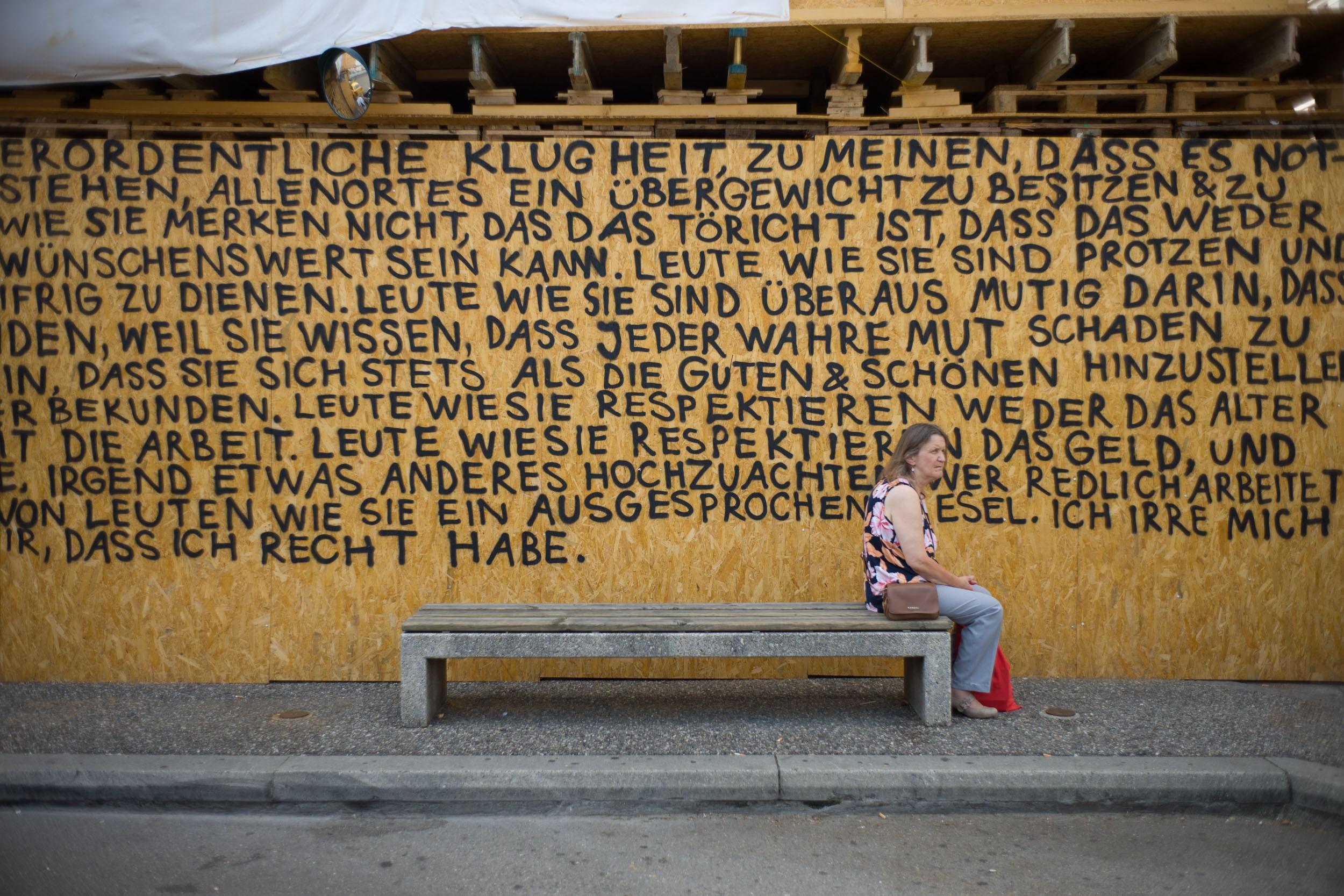
Hirschhorn’s installation has sparked local controversy but it has also become increasingly popular with residents. Simone, 30, has already visited the sculpture four times: “The first time I stayed an hour and a half; after that I made shorter visits while waiting for my bus to leave from the bus stop across the road.”
Manfred, 50, is sitting in the canteen, where east African cuisine is on offer. He says he has visited nearly every day. As the caretaker of the Autonomous Youth Centre in Biel, he felt immediately at home in this mini-town built of pallets. “It’s not like a museum, where lots of people are hesitant about going in,” he says.
Thanks to Hirschhorn, Manfred read a book by Walser for the first time when he heard about this project two years ago.
As a writer, Walser “forces us to ask questions about the target audience: to whom are these texts directed? The sculpture helps us to find answers together,” says Ann Cotton. An Austrian-American author, she is staying until the end of July.
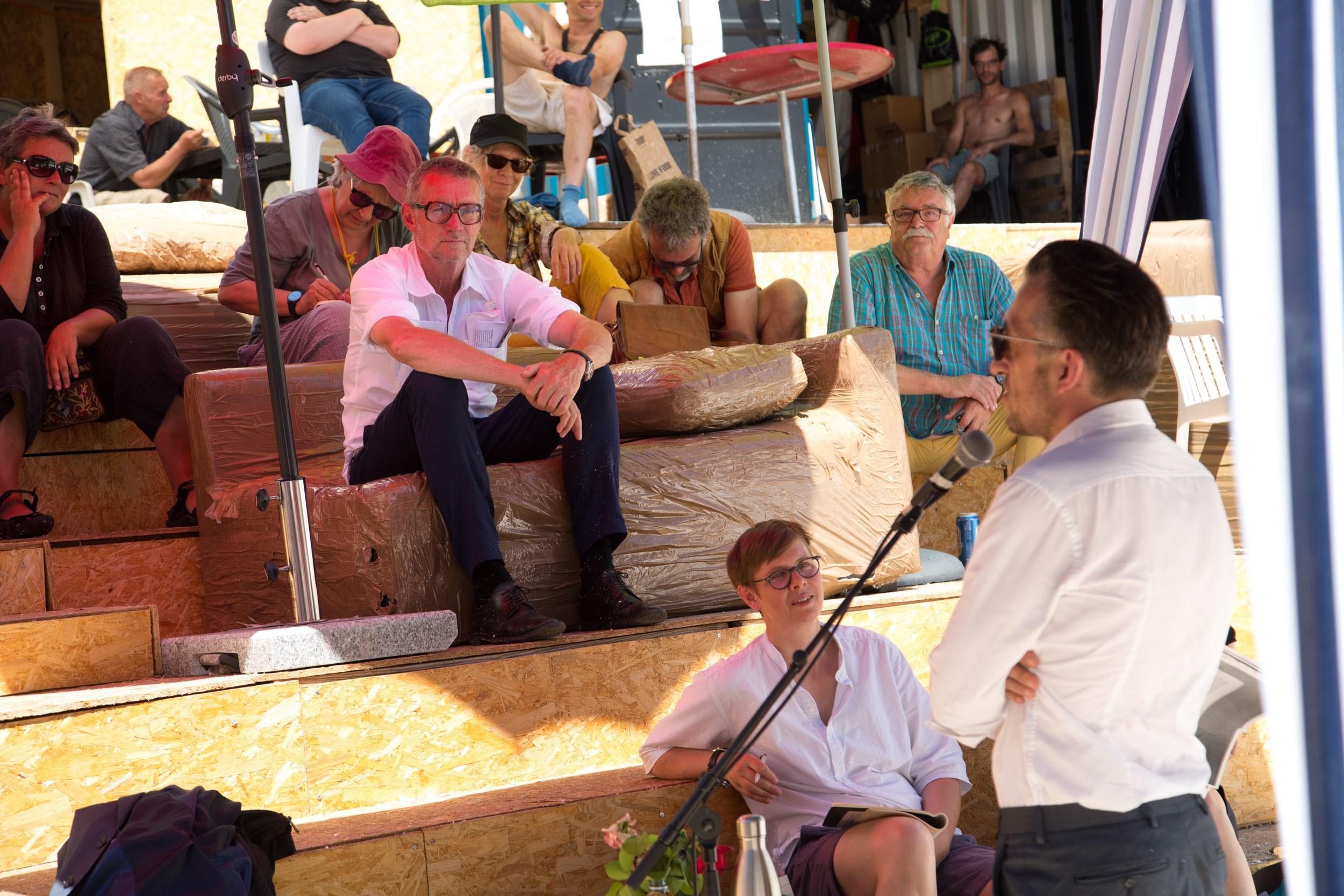
Walser in conversation
Malick, a young Biel resident originally from Senegal, shows off a few newly painted pictures on A4 paper: “I started here a few weeks ago. It just happened.” Wearing an old helmet, he has become one of the main figures present at the monument.
Malick has no reservations about taking part in discussion forums on the subject of Walser, along with the experts invited daily. “We don’t have a moderator, anyone can take part,” Hirschhorn says. “Malick has something to say and enjoys the contact with the microphone, so he automatically gets his say.”
Hirschhorn was born in Bern in 1957, grew up in Davos and attended Zurich University of the Arts. In 1984, he settled in Paris. In his studio in Aubervilliers in the northern suburbs, since 2001 he has been creating art that, on the surface, is unsightly.
He works in groups. For example, in 2004, together with young people from his neighbourhood, he produced “Musée précaire Albinet,” bringing masterpieces from the Centre Pompidou into the “93rd Departement” (Seine-Saint-Denis.) In 2013, he built a “Monument to Gramsci” together with residents of the Bronx district in New York.
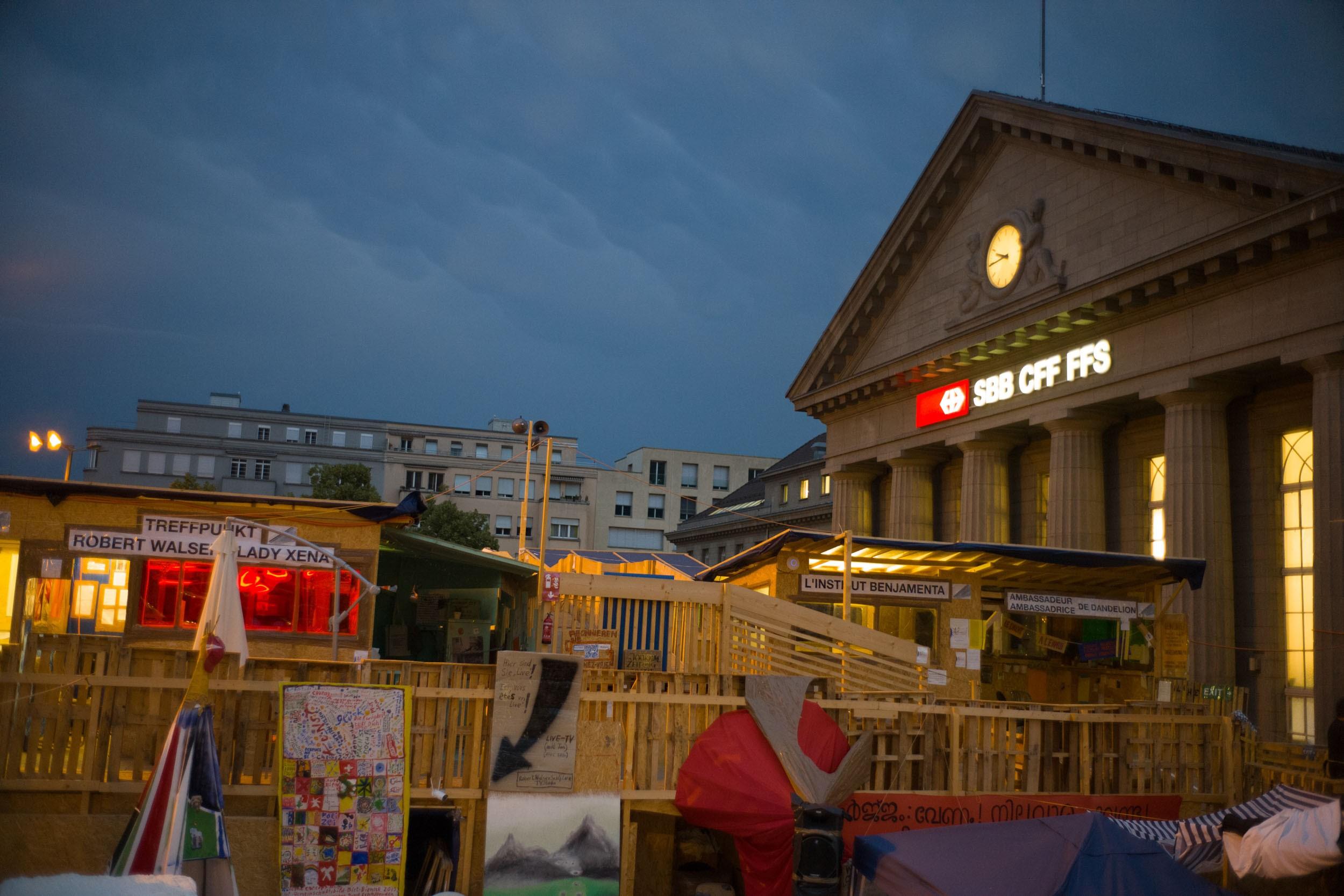
Art, collectives, and democracy
“Thomas has enormous generosity in his heart, his head and his ideas. He listens, he never imposes anything, he asks questions. And he is always working,” observes Mamadou, another key player in the Biel sculpture. “I’m an artist, not a social worker,” says Hirschhorn, who represented Switzerland in 2011 at the Venice Bienniale. He produces art, nothing else.
The Swiss artist has also courted controversy. On December 10, 2003, Hirschhorn announced that he would stop exhibiting in Switzerland for as long as the rightwing People’s Party politician Christoph Blocher was in the government. At the end of 2004, he organised a big debate about Swiss democracy in the Swiss Cultural Centre in Paris, called “Swiss-Swiss Democracy.” He clashed with critics, but most blows were delivered from distance, by people who didn’t bother to visit the Paris event to discuss the issue.
Hirschhorn’s temporary monument in Biel is a replacement for the 2019 Swiss Sculpture Exhibition. For the 13th edition, which has taken place in Biel at irregular intervals since 1954, the curator Kathleen Bühler suggested inviting just one artist instead of scattering different sculptures around the city. “This work really must be viewed as a sculpture and not an exhibition,” says Bühler, who is also the curator of the Bern Museum of Fine Arts. She is taking a break from the museum in order to be present in Biel for the 86 days of Hirschhorn’s exhibition.
Local controversies
Outside the entrance to the installation, the public can read information about the budget for Hirschhorn’s sculpture. The construction and maintenance over the three months cost CHF1.6 million, of which CHF735,000 francs is earmarked for wages and fees to those working on it. Hirschhorn will get CHF30,000 francs, which covers his contribution since 2016. But to cover the total costs, another CHF240,000 will be needed.
Despite its popularity, the project has been plagued by a several local controversies since 2016, exacerbated by reports in the local media that Hirschhorn describes as “not very well-meaning”. Some residents opposed the project, along with taxi drivers and cyclists, who were unhappy with its location at the station, which restricted parking spaces. Letters of complaint were also sent to local papers.
After mediation and public debate, the artist and the foundation organising the construction decided to delay it for a year from summer 2018. Two members of the foundation’s board quit in the spring because of differences of opinion with Hirschhorn.
“Dispute is an integral component of public art,” says Bühler. All the previous editions of the event have given rise to similar debates, Biel historian Margrit Wick said in June.
“It’s all the more surprising when you realise that the formalistic sculptures shown in the early editions [of the Swiss Sculpture Exhibition] elicited similar comments such as, ‘It’s ugly, it isn’t art, it’s expensive and useless’,” Bühler says. But for the first time since 1954, the artist responsible is present seven days a week to discuss his work.
Translated from German by Catherine Hickley

In compliance with the JTI standards
More: SWI swissinfo.ch certified by the Journalism Trust Initiative







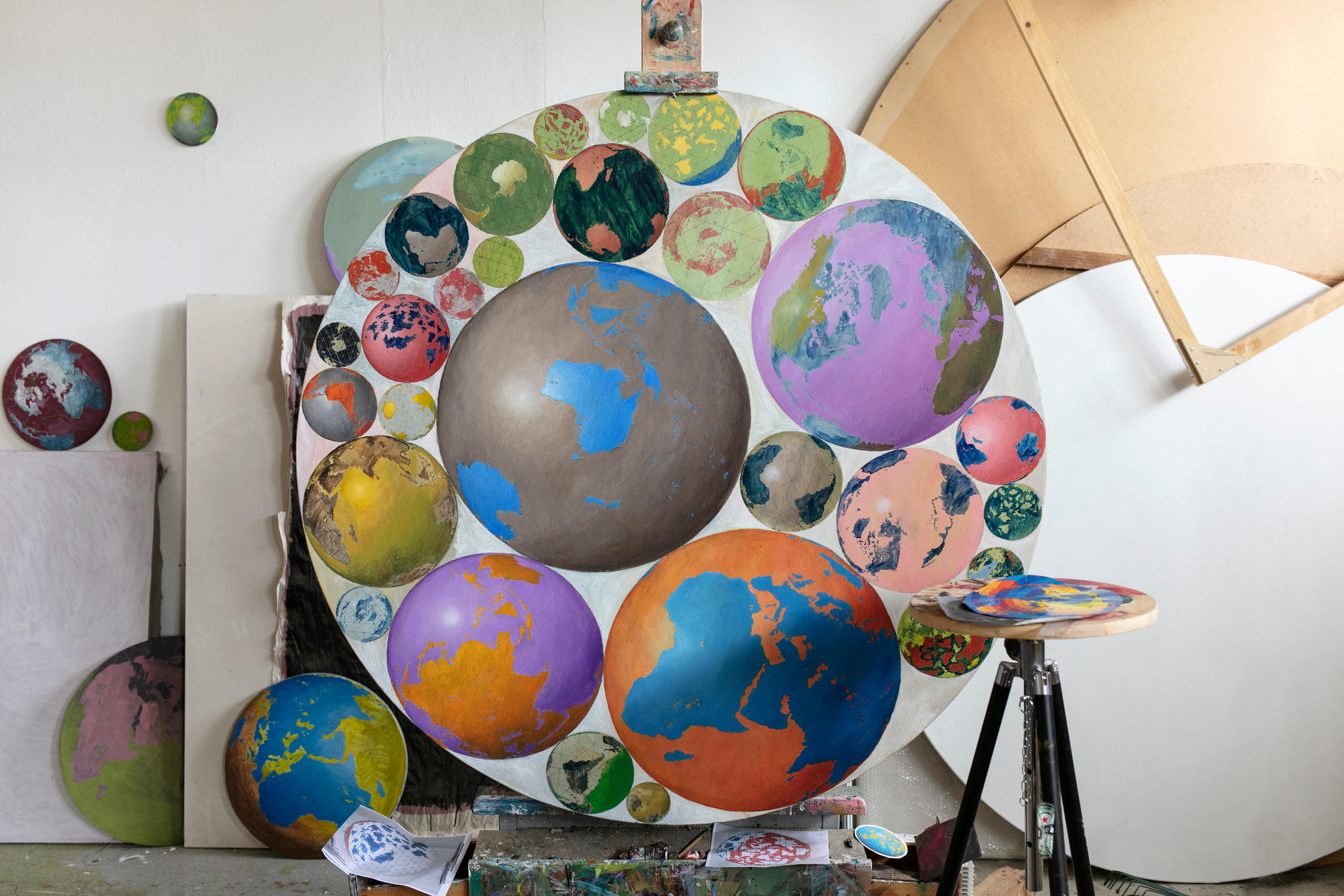
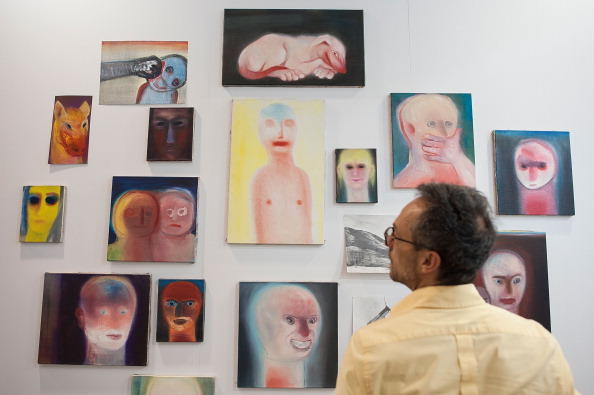
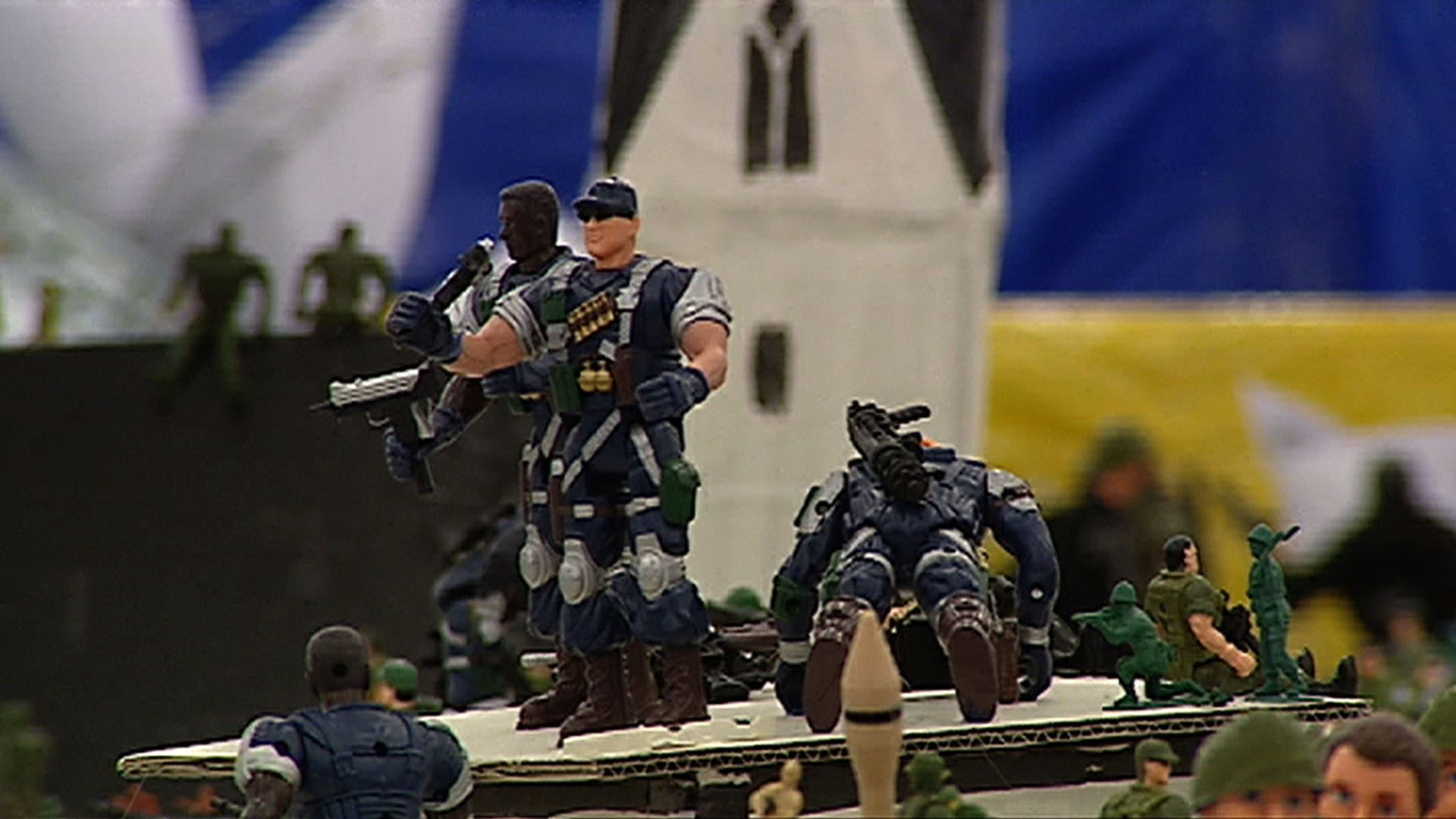

You can find an overview of ongoing debates with our journalists here . Please join us!
If you want to start a conversation about a topic raised in this article or want to report factual errors, email us at english@swissinfo.ch.